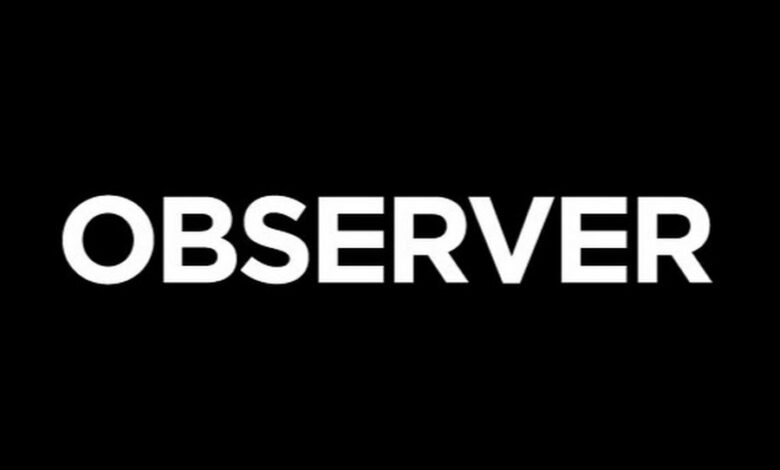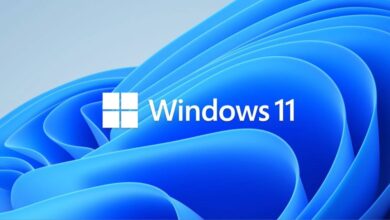Insights into ICANN’s new gTLD application round: An interview with Theresa Swinehart

There a multiple steps between you and your domain name. There’s the domain registrar that you buy your domain name from and then a registry that owns and manages a TLD. Then there is ICANN that regulates both.
ICANN are opening a new round of gTLD applications. This means that in a few years there will be more options after the dot. But what will they be, who can put in an application, and how does it all work?I got to speak with Theresa Swinehart, Senior Vice President of Global Domains and Strategy at ICANN, about the new gTLD application round and what’s required to make sure everything runs smoothly.
This conversation was delightfully long and to make it more digestible the answers have been formatted to be more reader friendly.
Could you elaborate on the various stakeholder organizations and roles within the ICANN community and their specific contributions to the current round of gTLD applications?
The New gTLD Program: Next Round is a true reflection of ICANN’s bottom-up, multistakeholder model, in which end users, businesses, civil society, governments, and technologists play important roles in community-based and consensus-driven policymaking.
The New gTLD Program: Next Round comes at the request of ICANN’s global multistakeholder community,which developed the policy recommendations that underpin the New gTLD Program over a number of years, and is being implemented by ICANN.
In March 2021, the Generic Names Supporting Organization (GNSO) Council approved the Final Report on the New gTLD Subsequent Procedures Policy Development Process.
This report is a culmination of nearly five years of work by the Subsequent Procedures Working Group evaluating the 2012 application round to identify areas where additional policy guidance might be needed.
The report provides implementation guidance, recommendations, and other inputs for subsequent rounds.
The SubPro Working Group sought input and participation from all of ICANN’s Supporting Organizations and Advisory Committees, as well as GNSO Stakeholder Groups and Constituencies, which consist of representatives from government, civil society, commercial and non-commercial groups, Domain Name System (DNS) industry, security professionals, and more.
The ICANN Board subsequently approved a number of recommendations, leading to the implementation of the New gTLD Program: Next Round.
What is the formal process by which policy concerns are identified by the community, deliberated by the ICANN Board, and subsequently implemented into operational guidelines?
The ICANN Bylaws mandate that ICANN policies are developed through a bottom-up, consensus-based collaborative process.
This takes place in an open and sequential way through meetings, teleconferences, and Public Comment opportunities.
The ICANN community works through three Supporting Organizations and four Advisory Committees.
The three SOs are primarily responsible for making policy recommendations to the ICANN Board related to domain names and Internet Protocol (IP) addresses.
The SOs are the Generic Names Supporting Organization, the Country Code Names Supporting Organization, and the Address Supporting Organization.
As it relates to new gTLDs, policy development is led by the GNSO and its processes. The New gTLD Program: Next Round is a direct result of their policy recommendations.
More information on policy development at ICANN can be found on the policy webpage.
What are the most significant procedural and policy changes between the current gTLD application round and the previous one?
A few of the key differences:
- There is now a standalone Registry Service Provider (RSP) Evaluation Program, which conducts the necessary technical evaluation of an RSP. RSPs provide critical backend operations on behalf of a registry operator. Some registry operators choose to act as their own RSP, while others outsource these services. Potential RSP providers can now be pre-evaluated so that the technical evaluation does not have to happen at the same time as the gTLD application evaluation, enhancing efficiency.
- We have a strengthened Applicant Support Program (ASP) to make the New gTLD Program as accessible as possible to new applicants who may need financial support, and have focused a great deal more resources on that.
- Applicants can now apply for variant gTLDs, in part due to the development of mechanisms to manage these TLDs by the ICANN community. A variant TLD is an Internationalized Domain Name (IDN) that can be registered in different ways due to variations in the spelling of words in a given language.
- Additional scripts available for IDNs: IDNs can be applied for in 26 different scripts representing over 380 languages.
- New gTLD applicants will be able to designate a replacement string (i.e., second choice gTLD name) alongside their first choice in their gTLD application. This provides a potential path to avoid contention with another applicant in the case their string is identical or confusingly similar to another one.
- Evaluation of and commitment to trademark rights protections: The ICANN community engaged in an extensive policy review of the rules and protections from the 2012 round through the Review of Rights Protection Mechanisms Policy Development Process.
With the expanded support for international scripts, how is ICANN addressing the challenge of preventing visually or phonetically similar gTLDs that could lead to user confusion?
As part of the community’s recommendations for the Next Round, strings (or applied for gTLDs) must not be confusingly similar (visually) to an existing TLD or a reserved name (or blocked name).
To help resolve these potential issues, as was the case in 2012, a String Similarity Evaluation will be in place to handle evaluations of visual similarity.
ICANN is developing an automated tool that can be used by the community as well as the evaluation panel, made up of script experts, to help optimize the review of visually similar strings.
If a string is found to be visually confusingly similar to an applied-for string, the application will end up in a contention set, meaning they have to compete for the same string, usually via an ICANN auction; if found confusingly similar to an existing string or a blocked name, the application will not proceed.
In addition, if an applied-for gTLD (and/or its variant labels) is believed to be visually or aurally similar, or similar in meaning, a String Confusion Objection may be filed. This process will be outlined in detail in the final Applicant Guidebook.
Could you explain the technical mechanisms and evaluation criteria used to assess name collision risks during the TLD evaluation process?
The delegation of almost any new gTLD carries some risk of name collision, which happens when a name that is used in one namespace (e.g., an internal network) may be used in a different namespace (e.g., the Domain Name System).
The name collision framework, and the procedures that will be used to assess and (if necessary) mitigate any name collision risks, will be outlined in the final version of the Applicant Guidebook.
The final Public Comment proceeding on the Applicant Guidebook will open in May 2025, and a final Applicant Guidebook is expected to be ICANN Board-approved and published by December 2025.
Is ICANN considering restricting applications for certain popular Web3 TLDs (such as .crypto or .wallet) that exist outside the traditional DNS system to prevent potential user confusion?
The fact that a string is used in an alternative naming system does not automatically result in applications for that string to be rejected.
As part of the new gTLD application process, each applied-for gTLD string undergoes a risk assessment in which it is checked against data collected from DNS servers from around the world to determine if the string carries a high risk of causing name collisions between name spaces.
If the string is deemed to be high-risk, the applicant must develop and implement a mitigation plan; otherwise, the application will be rejected.
The Applicant Guidebook spans approximately 400 pages. Could you provide a concise summary of the key eligibility requirements and qualification criteria for prospective gTLD applicants?
All new gTLD applicants must show that they have the technical, financial, and operational capacity to operate a registry.
Given the importance of gTLD operations to the security and stability of the Internet, the application process and the technical, business, and data requirements are stringent.
The Applicant Guidebook is an indispensable resource for potential applicants to understand the technical responsibilities and contractual obligations involved in running a gTLD, and provides a roadmap to the application process, covering everything from eligibility requirements to evaluation criteria.
A few general applicant criteria include:
- Any established corporation, organization, or institution in good standing (e.g., meeting financial obligations) may apply for a gTLD.
- Applicants must pass multiple evaluations, which include background screening, and data and financial escrow mechanisms. Background screening at both the entity levels and the individual level (for directors, officers, partners and major shareholders) will be conducted relating to general business due diligence, criminal history, and history of cybersquatting behavior.
- In certain cases, applicants may be asked to submit community registration policies, or submit evidence of community endorsement, or a letter of government support or non-objection, or documentation of third-party funding commitments.
- Applicants for IDN strings must provide information indicating compliance with technical requirements. Applicants must provide applied-for gTLD strings in the form of both a U-label (unicode) and an A-label (punycode), as well as supplemental information, and they must demonstrate that they have made reasonable effort to ensure the encoded IDN string does not cause rendering or operations problems.
In addition to applicant criteria, there are a number of evaluations that relate to the actual gTLD application (e.g., string similarity). These evaluations are outlined in the Applicant Guidebook.
ICANN also is preparing complementary materials and Frequently Asked Questions (FAQs) intended to help prospective gTLD applicants more readily understand how to apply and how to navigate the gTLD evaluation processes. These materials will be available on the program website.
What is the strategic rationale for expanding the TLD namespace, and what tangible business advantages does TLD ownership offer to organizations?
The goal of the The New gTLD Program: Next Round is to foster diversity, encourage competition, and enhance the usefulness of the DNS.
It also is part of ICANN’s work to enable the stable expansion of the DNS through the introduction of new gTLDs.
The Next Round provides an opportunity for businesses, organizations, communities, and others, to apply to operate a unique digital asset that can be used in meaningful and innovative ways.
Large global organizations can use gTLDs to enhance and protect their online reputation and defend against fraud, to instill a sense of confidence for their customers, and to establish secure online spaces for employees, customers, and partners.
Those looking to differentiate their products or services can use a brand TLD to compete more effectively in the global marketplace using new gTLDs.
Some gTLDs are operated for the benefit of a particular community, allowing people with similar interests or values to connect with one another and share information and ideas.
Cities across the globe have used geographical gTLDs to promote tourism and the unique lifestyle and culture of their metropolitan area.
Given that the World Wide Web initially developed primarily in Western countries, what initiatives is ICANN implementing to make TLD ownership and DNS governance more inclusive and accessible to stakeholders from all regions of the world?
To make the New gTLD Program as accessible to as many eligible entities as possible, ICANN is providing financial and non-financial assistance to qualified applicants through the ASP.
The ASP is intended to make the New gTLD Program attainable to applicants that want to apply for a new gTLD but are unable to do so because of financial constraints and lack of other resources.
The ASP provides a range of financial and nonfinancial assistance for qualified applicants including access to volunteer professional services, training, and other resources, and reductions in base gTLD application and evaluation fees (between 75-85% reduction).
Nonprofits, nongovernmental, and charitable organizations; intergovernmental organizations; indigenous and tribal peoples’ organizations; and small businesses that operate as social enterprises or which operate in a less-developed economy are eligible for support. More information can be found on the ASP webpage.
ICANN is also committed to supporting a multilingual Internet through the stable and secure use of Internationalized Domain Names, which are TLDs that incorporate characters from different scripts, such as Arabic, Chinese, Cyrillic or Devanagari.
In the New gTLD Program: Next Round, applicants will have the opportunity to apply for a gTLD in 26 different scripts, representing hundreds of languages used around the world.
ICANN also supports the use of IDNs and new gTLDs through the promotion of Universal Acceptance.
Universal Acceptance is a technical necessity that ensures that all valid domain names, including IDNs, can be used by all Internet-enabled applications, devices, and systems. More information is available on ICANN’s UA webpage.
مصدر الخبر
نشر الخبر اول مرة على موقع :www.techradar.com
بتاريخ:2025-05-07 17:23:00
الكاتب:
ادارة الموقع لا تتبنى وجهة نظر الكاتب او الخبر المنشور بل يقع على عاتق الناشر الاصلي




